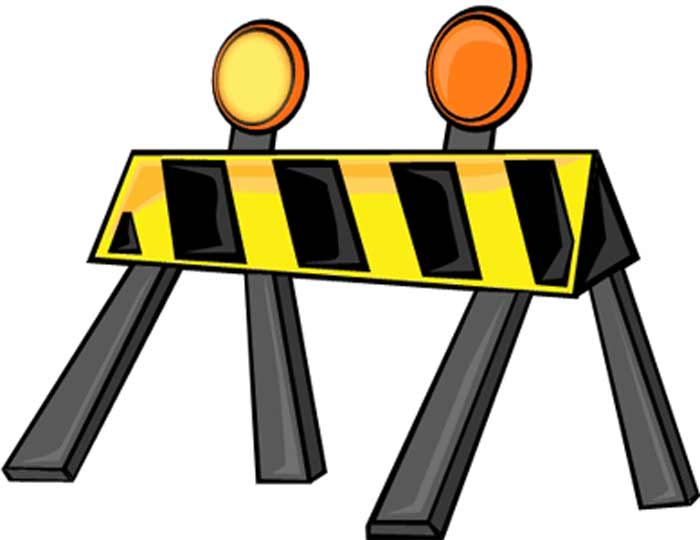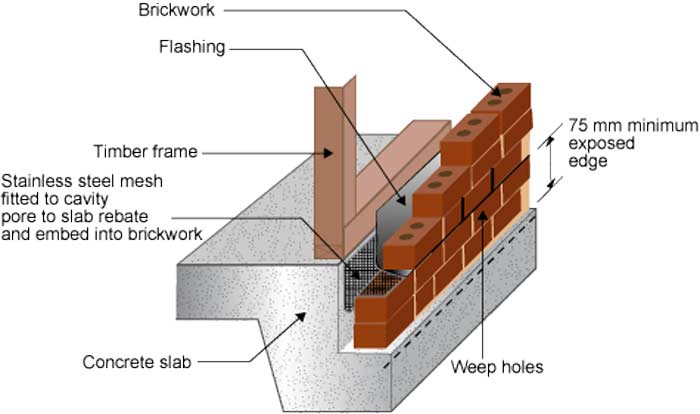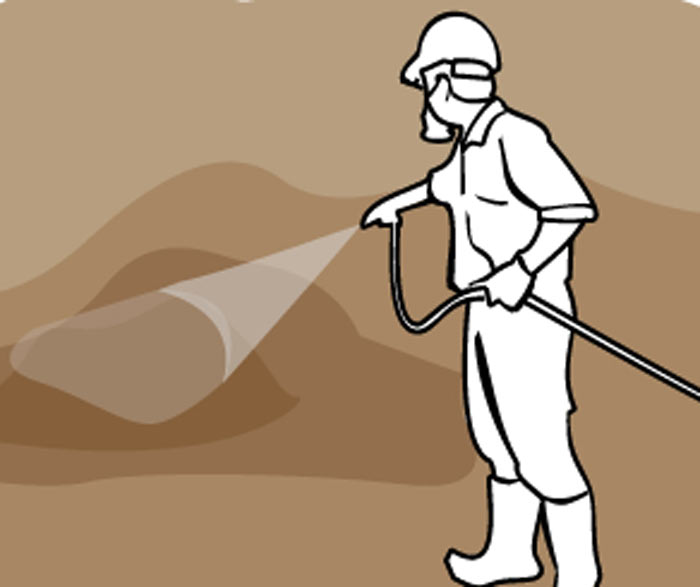Termites infest your home secretly and you only realize it when they have done so much damage. Termite barriers are a great solution since they are designed to prevent concealed entry of termites into your property. Learn more about various types of these barriers, how they work, and the cost of installing as well factors that might influence the costs incurred.
Table of Contents
What are They?
Termite barriers/shields are systems created to keep termites away from your home by limiting the entry points to your home.
It could also involve using products that prevent survival of active termite colonies. You can install termite barriers before construction or even later when the construction process is over.
Types of Shields
Termite barriers are classified into three types; physical termite barriers, chemical termite barriers and termite resistant roof and wall frames. These three types are discussed below;
Physical termite barriers
A physical termite barrier refers to a layer positioned below the slab of your home or building.
Just like moisture layer is laid prior to pouring the slab, the physical termite barriers which comes in wide sheets are place underneath your home or building.
Overlapping of the sheets in the Rentokil and sealing with an adhesive is done. Using a quality cloth tape, the barrier is taped down.
Depending on your property or the requirements, the termite barrier is either laid covering the area beneath the slab completely or just around the slab’s perimeter and pipe penetrations.
In most cases, you will be advised to use a Rentokil physical termite barrier in case you are extending the construction of your home or if you are building a new home all together.[1] You are better placed if you use termite barriers for new constructions as that way, they are found to be more effective.
The physical termite barriers are also considered the best since they are the least toxic and the most cost effective. These termite barriers, once installed during construction will last for a life time. It is therefore advisable that you set up the barriers during construction so that you do not have to disturb the flooring of your already constructed home a t a future date.
The life expectancy of this preventive measure is estimated to be fifty years. This makes it one of the long term preventive measures.
How they work
If you use stainless steel mesh, it will prevent secret entry of termites by blocking the possibility of the termites getting into your house. The steel mesh is installed on all pipes that come through the concrete slab. The wall cavity surrounding your home is fit with the steel mesh.
Unlike chemical barriers, as will be discussed below, physical termite barriers neither kill nor repel termites but they seal any possible entry points into your house that termites may use.
Alternatively, you can use particulate barriers. They basically involve coming up with a densely packed layer made up of sand, granules or basalt. The particles are too large for the termites to make movements through them. In addition to that, the spaces left between the granules are very small making it impossible for termites to crawl into your house.
Chemical termite barriers
This termite barrier involves use of a liquid chemical to prevent any possible entry of termites. This liquid is either applied in the soil, around the perimeter of your home, or under concrete flooring.
If you wish to protect your home or even business premises from termite infestation, you can comfortably trust chemical termite barriers as an effective termite barrier.
Unlike physical termite barriers which are most advocated for before construction takes place, chemical termite barriers can be applied at any time. The chemical termite barriers are the best especially if you are dealing with subterranean termites.[2]
Before application of chemical termite barriers is done, you are supposed to inspect your entire house so as to be sure there are no live termites that already exist.
In case, you find live termites, you are advised to treat them and ensure they are all dead before the chemical barrier is put in place.
To install the chemical termite barriers, the professional digs a trench on the area surrounding your building. The trench should be about 300mm in width and a depth that is enough to show the footings of your building.
In most cases, the chemicals are mixed with water then injected into the soil. One of the advantages of using this type of barrier is that it does not require any structural alterations. There are two main ways of applying the chemical barriers;
Drill and inject
Here, you make holes in the concrete and inject the termiticide into the drilled holes. The holes are then sealed back.
Cutting and re-capping
Compared to the drilling of holes method, this method is more effective. In this case, the concrete is cut along the perimeter of your house. The trench, treat and fill back method is then used. Re-capping the concrete can be done using new pavers so that future treatments are made easier.
Working Meechanism
When the chemicals have been injected into the soil around your house, they can do to things at the same time; first, they kill any termites that come close to your home and second, they prevent entry of termites into your home since they act as repellants.
As termites crawl through the soil, they are exposed a lethal dose of the chemicals used in the termite barrier. Most of the chemicals used have the ‘transfer effect’. This means, when one termite comes into contact with the chemical, it transfers it to the rest of the colony.
Termiticides used as chemical barriers receive praises for their excellent results since unlike chemical repellants, they do not just deter the termites from getting into your structure but they kill the as well. One of the disadvantages of chemical termite barriers is that their effectiveness may be reduced by rains or other climatic changes. This means you must retreat the structure from time to time.
Termite Resistant Roof or Wall Frames
This method involves use of timber or steel that is naturally termite resistant.
This method prevents entry of termites on the basis of their resistance nature. If termites cannot obtain cellulose from the roof and wall frames of your house due to the materials used, they will not be interested in such materials.
This method is however not as effective as the two methods above since there are other materials other than the roof and wall frames that are made of cellulose containing material which may attract termites. The termites can still get into your house and feed on the other wooden materials.
Cost
The cost of termite barriers varies depending on a number of factors as discussed below;
Size of treatment area
If the barriers are to be installed on a large area of your home, you will expect to pay a higher fee since more work is done and more material is used.
Type of termite barrier used
The charges for the termite barriers will also vary with the method used. If you choose to install physical barriers, you are likely to pay less as compared to chemical barriers.
Material used in making the termite barrier
If the barrier, for instance, physical barrier uses steel mesh, you may spend so much as opposed to the case where you use sand to create the barrier. The types of chemicals used in applying the chemical barriers also vary in prices.
Whether the barrier is pre-construction or post construction
Pre-construction termite barriers are cheaper than post-construction barriers. This is because, if you wish to install barriers in an already constructed house, you will incur costs of altering the structure of your building.
Signs of past or current termite infestation
If your house is infested with termites at the time you wish to apply the barrier, you will incur double costs. First, you will pay for treatment of the current infestation or inspection if you had a previous infestation; then you will now incur the cost of the barrier.
Average cost
The approximated cost of termite barriers is $2000 to $3500. If you decide to use a chemical repellant alone, it will cost you $500 less. However, you are discouraged from opting for this option as it does not help eliminate the termites through the transfer method.
Around House for existing Homes
Where you wish to create barriers in an already constructed home, you are advised to go for the chemical barriers. This is because; this type of barrier offers a simple of option of just drilling holes and injecting the chemicals then sealing the holes.
Even if you go for the cutting and re-capping method, it only involves restructuring the building just on specific locations which are busy to cover up. Physical barriers, although they can be used after construction, may result to incurrence of huge costs due to the necessary replacements to be done on your structure.
Barriers for new Constructions
If you wish to choose a termite barrier for a new construction, you should consider using physical termite barriers. This is because, the barrier can be applied from the point the foundation of your house is laid.
Physical termite barriers installed at the start of new constructions will last for years. Unlike chemical termite barriers, you will not have to retreat your house from time to time. Since the physical termite barriers are a long term solution, it is better if you consider installing them even if you do not suspect an attack by termites.
You may not know the future and thus, it is wise to secure your house at the beginning of construction. Termite Resistant Roof or Wall Frames is also another termite barrier you should consider at the time of construction. Use termite resistant wood everywhere possible.
This does not however mean that you cannot use chemical barriers at the start of your construction. You can also treat the soil on which your foundation is built to keep away termites. All in all, a preference is always given to physical barriers.
Termite barrier products
Graded stone termite barrier
Used as a physical termite barrier, these kinds of stones protect your house from any possible destruction by termites. The commonly used one is granitgard graded stone which offers your building a long term solution to termite prevention.
Since it is visible and flexible, it remains effective even after any servicing or adjustments are made to the structure of the building. The building components can freely move without causing any disturbance to the granitgard which allows for independent movements.
This graded stone blocks hidden termite entry points. Any termites that insist on making their way to the building forcefully are exposed. This makes it easy to eliminate such termites.[3]
Rentokill termite barrier
As earlier discussed under the types of barrier, this is a physical termite barrier. It involves placing a protective material as single layer prior to pouring of the slab. It prevents entry of subterranean termites through pipes and the perimeter of the building.[4]
Mesh
Commonly referred to as termimesh system, it involves use of a mesh made of stainless steel. It blocks the entry of point of termites. Over half a millions homes which used termimesh as a termite barrier report great success. This is a report given from 1993.
More and more people who continue to use this method say it is very effective. The system was invented by TMA Corporation in Perth. It is best when installed at the time you begin the building process. The mesh can be bought from all over the world.[5]
Spray
Chemical barriers come inform of liquid treatments. They can be applied either using hand sprays or reticulation systems. Where you do not want to inject the termiticide into the soil, you can decide to use hand sprays. Spraying of the chemicals requires that they are first be tested and approved to be safe among humans.
Plastic
You can also use plastic barriers which involve impregnating plastic sheets with chemicals designed to repel and kill termites.
Placing plastic sheets which contain termiticides around the edges, underneath the concrete or on top of foundations is one great way to always chase away and terminate any termites that come close to your building.
Further Reading
- Termite Droppings-Drywood, what they look like, Health Risks, Clean vs Sawdust
- Formosan Termites Pictures, Signs Treatment & Damage
- How to Get Rid, Kill Termites + Treatment Cost
- What Causes & Attracts Termites?
- Do Termites Bite Humans? Pictures & Remedies
- Flying Ants vs Termites-Differences & Similarities
- Termite Inspection Cost, Procedure, how long it takes & Training
- Termite Colony-Queen, Soldier, Worker & King
- Drywood Termites Treatment Cost, Get rid & Damage
- Termite Bond Cost, Benefits
- Termite Baits, Stations & DIY Traps
- Dampwood termites Pictures, Damage & Treatment
- Termite Tenting & Fumigation- Cost, Preparation, Safety & Cleaning After
- Termite Barriers (Shields): Types, Cost, how they Work & Products
- Termites Damage, Pictures, Repair Cost, Ceiling, Floors, Wood & Fix
- Best Termite Sprays-Orange Oil (DIY), Boric Acid & Spectracide Reviews
- Termites Life Cycle & Span-Eggs, Larvae, Baby & Adults
- How to Prevent Termites-Tips to Protect your Home
- Signs of Termites Infestation-How do you know if have you them?
- What do Termites look like? Pictures, Size, Color & Look-alikes
- Termites: Where From, Habitat, Eat, Noise, Types +more!
- Subterranean Termites Swarmers Treatment Cost, Damages & Pictures
- Flying Termites with Wings (Swarmers) Pictures & How to get Rid
References
[1] https://www.rentokil.com.au/termites/protection/physical-barriers/
[2] https://www.westernexterminator.com/termites/chemical-barriers/
[3] http://granitgard.com.au/system-description/
[4] https://www.rentokil.com.au/termites/protection/
[5] https://www.termimesh.com.au



